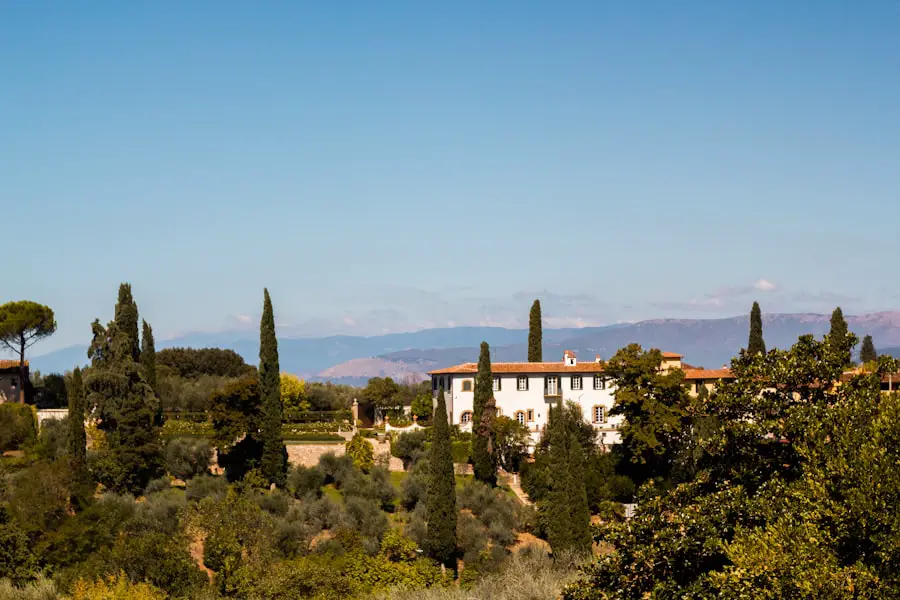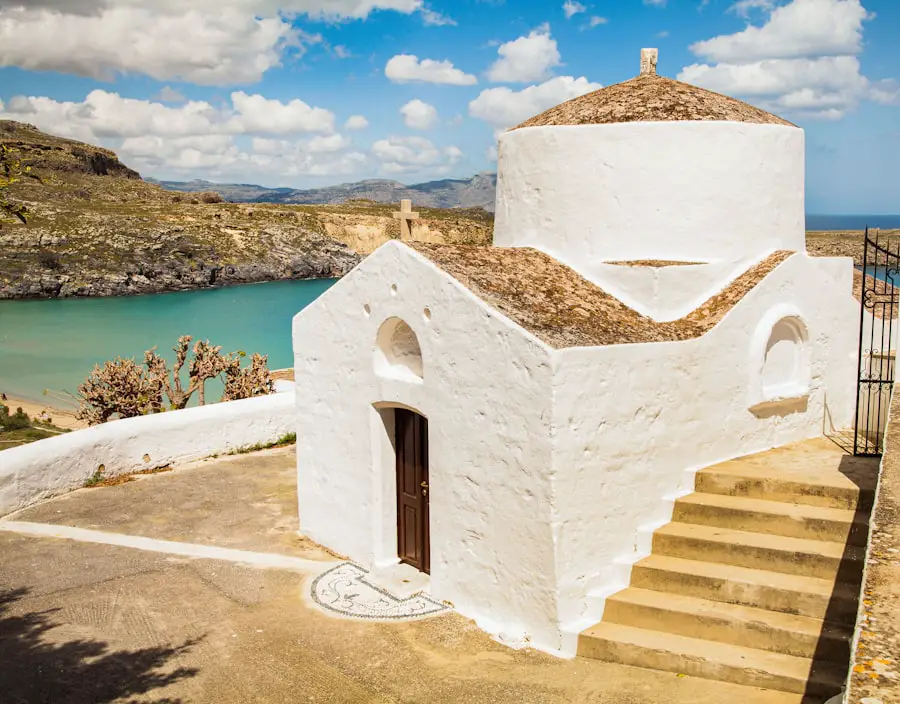When preparing for a trip to Italy, packing efficiently is crucial to ensure a comfortable and enjoyable experience. The climate can vary significantly depending on the region and the time of year, so it’s essential to check the weather forecast for your specific destinations. For instance, if you’re visiting during the summer months, lightweight clothing made from breathable fabrics like cotton or linen is advisable.
In contrast, winter travelers should consider packing layers, including thermal undergarments, sweaters, and a waterproof jacket, especially if they plan to visit northern regions like the Alps. Footwear is another critical aspect of packing for Italy. Given the country’s rich history and architecture, many cities are best explored on foot.
Comfortable walking shoes are a must, as cobblestone streets and uneven pavements can be challenging. Additionally, if you plan to visit religious sites, it’s wise to include a pair of shoes that are more formal or conservative, as many churches have dress codes that require shoulders and knees to be covered. Accessories such as a sun hat, sunglasses, and a reusable water bottle can enhance your travel experience, allowing you to stay hydrated while exploring the beautiful landscapes and urban environments.
Key Takeaways
- Pack comfortable walking shoes and dress in layers for varying weather in Italy
- Use public transportation like trains and buses to navigate between cities and regions
- Italians appreciate punctuality and expect polite greetings and gestures
- Try local specialties like pasta, pizza, and gelato, and follow dining etiquette like not asking for substitutions
- Visit iconic landmarks like the Colosseum, Vatican City, and the Leaning Tower of Pisa
- Be cautious of pickpockets and scams, and keep important documents secure
- Learn basic Italian phrases and carry a phrasebook for communication
- Use euros for transactions and tip around 10% in restaurants, and plan a budget for daily expenses
Navigating Transportation in Italy
Italy boasts a well-developed transportation network that makes it relatively easy for travelers to navigate between cities and regions. The country’s extensive train system is one of the most efficient ways to travel, with high-speed trains like the Frecciarossa connecting major cities such as Rome, Florence, and Milan in just a few hours. Purchasing tickets in advance can save money and ensure you secure a seat during peak travel times.
Additionally, regional trains offer access to smaller towns and picturesque villages that are often overlooked by tourists. In urban areas, public transportation options such as buses, trams, and metro systems are widely available. Cities like Rome and Milan have comprehensive networks that can take you to most attractions without the need for a car.
However, it’s essential to validate your ticket before boarding to avoid fines. For those who prefer a more leisurely pace, renting a bicycle or scooter can be an enjoyable way to explore cities like Florence or Venice. However, be mindful of local traffic rules and pedestrian zones, especially in historic areas where vehicles may be restricted.
Understanding Italian Customs and Etiquette

Understanding Italian customs and etiquette can significantly enhance your travel experience and help you connect with locals. Italians are known for their warmth and hospitality, but they also value politeness and respect in social interactions. Greetings are an essential part of Italian culture; a firm handshake is common when meeting someone for the first time, while friends may greet each other with a kiss on both cheeks.
It’s customary to address people using their titles (Signore for Mr., Signora for Mrs.) followed by their last name until invited to use their first name. Dining etiquette is another area where cultural nuances come into play. Italians take their meals seriously, often enjoying long lunches and dinners with family and friends. When dining out, it’s polite to wait for the host to invite you to sit down before taking your seat.
Additionally, it’s considered rude to ask for modifications to dishes or substitutions; instead, embrace the traditional recipes as they are presented. Tipping is appreciated but not obligatory; rounding up the bill or leaving small change is generally sufficient.
Exploring Italian Cuisine and Dining Etiquette
| Topic | Metrics |
|---|---|
| Italian Cuisine | Types of pasta, pizza, risotto, and regional specialties |
| Dining Etiquette | Use of utensils, table manners, and tipping customs |
| Popular Dishes | Spaghetti carbonara, margherita pizza, and tiramisu |
| Wine Pairing | Chianti with pasta, Prosecco with seafood, and Barolo with red meat |
Italian cuisine is renowned worldwide for its rich flavors and regional diversity. Each region boasts its own specialties, influenced by local ingredients and traditions. For instance, while pasta dishes are ubiquitous throughout Italy, the types of pasta and sauces vary significantly from one region to another.
In Bologna, you might savor tagliatelle al ragù (often referred to as Bolognese sauce), while in Naples, the focus shifts to pizza with its thin crust and simple toppings. Dining etiquette in Italy is equally important as the food itself. Meals are often seen as social events rather than just a means of sustenance.
It’s common for Italians to linger over their meals, enjoying each course at a leisurely pace. When dining in a restaurant, it’s customary to order multiple courses: antipasti (appetizers), primi (first course), secondi (main course), and dolci (dessert). Additionally, wine is an integral part of Italian dining culture; choosing a local wine that complements your meal can enhance the overall experience.
Remember that in Italy, it’s generally frowned upon to order cappuccino after 11 AM; instead, opt for an espresso or macchiato.
Must-See Attractions in Italy
Italy is home to an array of iconic attractions that draw millions of visitors each year. The Colosseum in Rome stands as a testament to ancient engineering and gladiatorial history; exploring its vast interior offers insight into the grandeur of the Roman Empire. Nearby, the Roman Forum provides a glimpse into daily life during ancient times with its ruins of temples and public spaces.
Florence is another must-visit destination, renowned for its art and architecture. The Uffizi Gallery houses masterpieces by artists such as Botticelli and Michelangelo, while the Florence Cathedral with its stunning dome designed by Brunelleschi dominates the skyline. A short train ride away lies Pisa, famous for its Leaning Tower; climbing to the top rewards visitors with breathtaking views of the surrounding area.
Venice captivates travelers with its unique canals and historic architecture. A gondola ride through the winding waterways offers a romantic perspective of this enchanting city. The Piazza San Marco is home to St.
Mark’s Basilica, an architectural marvel adorned with intricate mosaics that reflect Venice’s rich history as a trading hub.
Safety Tips for Traveling in Italy

Be Aware of Petty Crime
While Italy is generally considered safe for tourists, it’s essential to remain vigilant and take precautions to ensure a worry-free experience. Petty crime, particularly pickpocketing, can occur in crowded areas such as public transportation or popular tourist attractions. To minimize risk, keep your belongings secure; use a crossbody bag that can be easily accessed but also closed securely.
Protect Your Valuables
Avoid carrying large amounts of cash and consider using a money belt or hidden pouch for valuables. Additionally, be cautious when accepting unsolicited help from strangers, especially in tourist-heavy areas where scams may occur. If approached by someone offering assistance or trying to sell you something aggressively, it’s best to politely decline and walk away.
Emergency Preparedness
Familiarizing yourself with emergency numbers—such as 112 for general emergencies—can also provide peace of mind while traveling.
Language Tips for Traveling in Italy
While many Italians working in tourism speak English, learning a few basic Italian phrases can enhance your interactions with locals and show respect for their culture. Simple greetings like “Buongiorno” (Good morning) or “Buonasera” (Good evening) can go a long way in establishing rapport. Additionally, phrases such as “Per favore” (Please) and “Grazie” (Thank you) are appreciated by locals and reflect good manners.
When dining out or shopping, knowing how to ask for items can be beneficial. For example, “Vorrei un caffè” (I would like a coffee) or “Quanto costa?” (How much does it cost?) can facilitate smoother transactions. While many Italians appreciate efforts to speak their language, don’t be discouraged if you make mistakes; they often respond positively to any attempt at communication.
Money Matters: Currency, Tipping, and Budgeting in Italy
Italy uses the Euro (€) as its currency, making it convenient for travelers from other Eurozone countries but requiring currency exchange for those coming from outside Europe. ATMs are widely available in cities and towns; however, it’s advisable to notify your bank of your travel plans beforehand to avoid any issues with card usage abroad. Credit cards are accepted in most establishments; however, smaller shops or restaurants may prefer cash.
Tipping practices in Italy differ from those in other countries; while service charges are often included in restaurant bills (indicated as “coperto”), leaving small change or rounding up the bill is customary if you’re satisfied with the service. In cafes or bars, it’s common to leave coins on the counter after ordering drinks or snacks. Budgeting for your trip should take into account not only accommodation and meals but also entrance fees for attractions and transportation costs; planning ahead can help you manage expenses effectively while enjoying all that Italy has to offer.
If you are planning your first trip to Italy, you may want to consider investing in a scarf with a hidden pocket for travel. This handy accessory can help you keep your valuables safe while exploring the beautiful cities of Italy. Additionally, you may want to check out the 5 best hard case golf travel bags for Spring 2025 if you plan on hitting the links during your trip. And if fishing is more your style, be sure to pack the best travel fishing pole to enjoy some relaxing fishing in Italy’s picturesque lakes and rivers.
FAQs
What are the entry requirements for traveling to Italy?
For most travelers, a valid passport is required to enter Italy. Some travelers may also need a visa, depending on their nationality. It is recommended to check the specific entry requirements for your country before traveling.
What is the best time of year to visit Italy?
The best time to visit Italy is generally during the spring (April to June) and fall (September to October) when the weather is mild and the tourist crowds are smaller. However, Italy is a year-round destination with each season offering its own unique experiences.
What are the transportation options in Italy?
Italy has an extensive and efficient transportation system, including trains, buses, and domestic flights. The train network is particularly well-developed and is a popular choice for traveling between cities. In major cities, there are also public transportation options such as buses and metros.
What are some must-visit attractions in Italy?
Italy is home to numerous iconic attractions, including the Colosseum and Roman Forum in Rome, the Leaning Tower of Pisa, the canals of Venice, the art and architecture of Florence, the Amalfi Coast, and the ruins of Pompeii, among many others.
What is the currency used in Italy?
The official currency of Italy is the Euro (EUR). It is recommended to exchange currency at banks or official exchange offices to get the best rates. Credit and debit cards are widely accepted in most establishments.
What are some cultural customs to be aware of when visiting Italy?
When visiting Italy, it is customary to greet people with a handshake and maintain eye contact during conversations. It is also important to dress modestly when visiting religious sites and to be mindful of local customs and traditions. Tipping is not as common in Italy as it is in some other countries, but it is appreciated for exceptional service.
